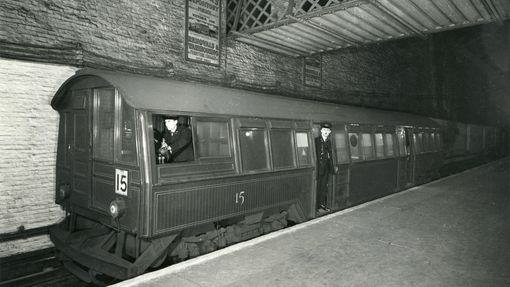
The Piccadilly line
Key facts
Length: 71km
Stations: 53
Opened: 1906
Introduction

The Piccadilly is the second longest line on the Underground after the Central line, but it has more stations, which are closer together on average. It runs from Cockfosters in north London into the West End and on to Hammersmith and Acton Town, where it divides into branches to Heathrow Airport and Uxbridge/Rayners Lane.
Why is it called the Piccadilly line?
The line originated in the Great Northern, Piccadilly & Brompton Railway (GNP&BR), which was shortened to Piccadilly for convenience. As well as being the best-known location in the original company name, it is also the name of the main road it runs under between Piccadilly Circus and Hyde Park Corner.
History
The line owes its existence to an opportunistic American financier, Charles Tyson Yerkes. Yerkes had been initially attracted to the District Railway in 1901, but also bought into a range of struggling Tube projects at the same time.
In typical style, Yerkes linked a District-owned South Kensington to Piccadilly Tube plan to a separate company hoping to run between Wood Green in north London and the Strand, raising money from his US contacts. With minor adjustments this became the inelegantly named Great Northern, Piccadilly & Brompton Railway (GNP&BR), which opened between Finsbury Park and Hammersmith in December 1906.
Did you know?
At the time it opened in 1906 the original GNP&BR line, at 14.5 km, was the longest Tube railway in the world
In 1907 a short branch from Holborn to Aldwych opened, but there were to be no further extensions for more than 20 years. The Railway could never deliver the profits Yerkes promised, but it took full advantage of a government finance scheme in the late 1920s to fund extensions from both ends of the line, opening in stages during 1932 and 1933.
These go north from Finsbury Park to Cockfosters and west from Hammersmith to Hounslow West and Uxbridge. Charles Holden’s station designs set new architectural standards. Arnos Grove, Southgate and Sudbury Town are now regarded as examples of the best public architecture of the period and are listed buildings, along with another 17 stations on the line.
Did you know?
The first escalator on the London Underground was opened at the Piccadilly line station at Earl’s Court in October 1911
During the Second World War, two closed stations were adapted to new secret roles. Down Street became the headquarters of the Railway Executive Committee, the body that oversaw Britain’s mainline railways. Brompton Road fulfilled a similar function for anti-aircraft command.
There was little investment in the Piccadilly line in the post-war years. The line did benefit from upgrades in the 1960s at its Victoria line interchange stations and new trains in 1973. The extension to Heathrow, discussed since 1956, was approved in 1970, with the line to Heathrow Central opened by Queen Elizabeth II on 16 December 1977. The addition of a fourth terminal to the airport led to a further extension of the line to Terminal 4 in 1984. In 2008, the extension to Terminal 5 opened on the same day as the new terminal.
Did you know?
The shortest distance between adjacent stations on the Underground is on the Piccadilly line between Leicester Square and Covent Garden, at 0.26 km
















